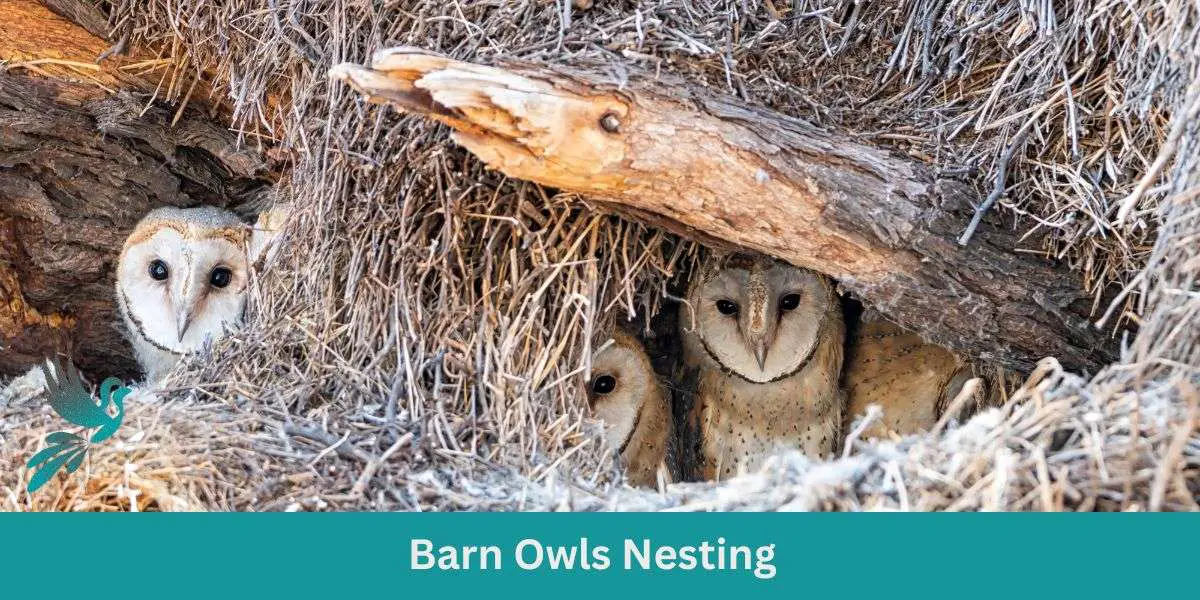The enigmatic barn owl, named aptly for its preference for man-made structures, has nesting habits that intrigue bird enthusiasts and conservationists alike.
As cavity nesters, barn owls don’t craft intricate nests like many other birds. Instead, they seek out quiet, concealed spaces.
In this exploration, we’ll delve into the nesting habits of barn owls, shedding light on how these beautiful raptors create a safe haven for their young.
Key Takeaways
- Nesting Sites: Barn owls are flexible when it comes to choosing a nesting site. While old barns, sheds, and church towers are favorite spots, they also nest in tree cavities, cliff crevices, and other sheltered locations.
- Nest Composition: Rather than building a traditional nest, barn owls often lay their eggs directly on the substrate, whether it’s the wooden floor of a loft or the bottom of a tree hollow. Over time, the site may accumulate owl pellets, molted feathers, and other debris, which can form a rudimentary nest.
- Nest Boxes: In areas where natural or traditional nesting sites are scarce, barn owls might readily adopt nest boxes. Conservationists and property owners often set up these boxes to support local barn owl populations.
- Breeding Season: Depending on the region, barn owls usually have their breeding season in spring. However, in favorable conditions with abundant food supply, they might breed a second time in late summer.
- Eggs and Incubation: A female barn owl typically lays 3-6 eggs, although clutches can sometimes be larger. These eggs are white and slightly round. The female incubates the eggs for about 30 days, during which the male provides food for her.
- Fledging: Once hatched, barn owl chicks (or owlets) remain in the nest for around 50-55 days before they’re ready to take their first flight. During this period, both parents share feeding responsibilities.
When do Barn Owls breed?
Barn Owls can breed in their first year, and while nesting can occur in any month of the year, most pairs lay eggs during the spring. The average date for the first egg has moved forward to April 17th, most likely due to climate change.
However, there is still variation in breeding dates annually and regionally. The main breeding season for Barn Owls is typically quoted as “March to August.”
The breeding cycle for Barn Owls often begins in late winter, with pairs spending much of their time at their intended nest site by early spring. Courtship and pair-bonding behaviors, such as mutual preening and cheek rubbing, are common during this time.
The male will bring food to the female, and copulation usually occurs each time food is presented. The female’s weight increases as she enters “breeding condition,” reaching around 425g.
How many eggs do Barn Owls lay?
Barn Owls typically lay 4-6 eggs, with an average of 4.7. Clutches laid earlier in the year tend to be larger than later ones. However, not all the eggs hatch, and the average number of hatched eggs is 4.
Abandoned eggs are usually a result of the female being underweight or experiencing extreme food shortage. In comparison to other owls of similar size, Barn Owls lay relatively small eggs in larger quantities.
Unlike most bird species, Barn Owls begin incubation as soon as the first egg is laid. They continue to lay additional eggs over a period of approximately 8-21 days. After 31-32 days of incubation, the eggs hatch every 2-3 days, typically in the order they were laid.
This asynchronous hatching creates an age difference of up to three weeks between the oldest and youngest nestlings. The female takes on the responsibility of incubation, while the male provides all the food until the young are around 3 weeks old.
Do Barn Owls build a nest?
Barn Owls do not build a traditional nest. Instead, they lay their eggs directly onto the previous year’s nest debris, which consists of a compacted layer of owl pellets. The female may create a scrape in the debris or break up a few recent pellets to provide a softer layer for egg laying.
In cases where there is no nest debris, the eggs may be laid directly on pellets produced while the owls were roosting or on any available surface, such as stone, wood, or loft insulation.
While the majority of Barn Owls nest once a year, approximately 10% of pairs may breed twice in one year. The proportion of pairs that breed twice varies significantly from year to year. There are even rare records of triple-brooding.
Second clutches are typically laid in July, sometimes in the same nest cavity or before the first brood has left. However, most second clutches are laid in an alternative nest place at the same site or nearby.
Complement this knowledge by exploring their interaction with their surroundings in Barn Owls’ Habitat. How do they cope with changes? Our article on Climate Change Impacts on Barn Owls provides insights. For those keen on a bird’s-eye view of the topic, our pillar content on Barn Owl is a comprehensive resource.


Leave a Reply
You must be logged in to post a comment.